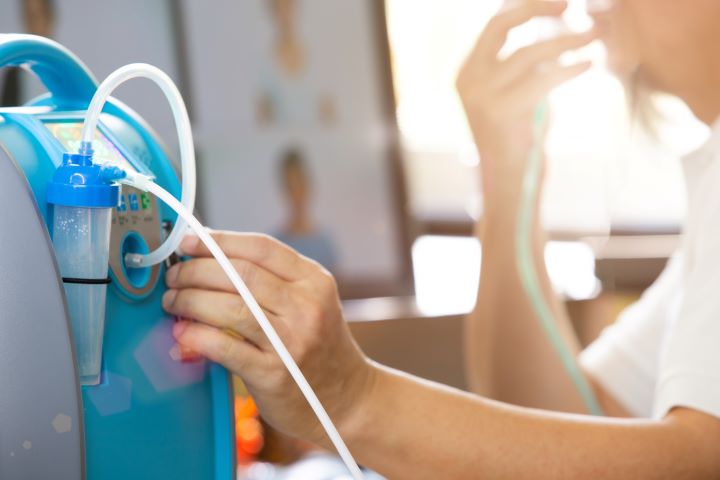Portable Oxygen Concentrators: Supporting On-the-Go Breathing Needs
Portable oxygen concentrators (POCs) have revolutionized the way people with respiratory conditions manage their oxygen therapy. These compact devices provide a reliable source of supplemental oxygen, allowing users to maintain their mobility and independence. This article explores how small portable oxygen concentrators support on-the-go breathing needs, offers battery life and charging tips, and highlights key features to consider when choosing a compact oxygen concentrator.

How do portable oxygen concentrators work?
Portable oxygen concentrators extract oxygen from the surrounding air, concentrate it, and deliver it to the user through a nasal cannula or mask. Unlike traditional oxygen tanks, POCs don’t require refilling, as they continuously produce oxygen. They use a process called pressure swing adsorption (PSA) to separate oxygen from nitrogen and other gases in the air, providing a steady stream of purified oxygen to the user.
What are the benefits of using a portable oxygen concentrator?
Portable oxygen concentrators offer numerous advantages for individuals requiring supplemental oxygen:
-
Increased mobility: POCs are lightweight and compact, allowing users to move freely and travel with ease.
-
Continuous oxygen supply: Unlike oxygen tanks, POCs don’t run out of oxygen as long as they have power.
-
No refills needed: Users don’t have to worry about scheduling oxygen tank deliveries or refills.
-
Travel-friendly: Many POCs are FAA-approved for use on airplanes, making air travel possible for oxygen therapy patients.
-
Improved quality of life: POCs enable users to maintain their daily activities and social interactions without being tethered to a stationary oxygen system.
How long do portable oxygen concentrator batteries last?
Battery life is a crucial factor in the performance of portable oxygen concentrators. Most POCs offer battery run times ranging from 2 to 8 hours, depending on the model and oxygen flow settings. Some devices feature hot-swappable batteries, allowing users to change batteries without interrupting oxygen flow. To maximize battery life:
-
Carry spare batteries for extended outings.
-
Use AC power when possible to conserve battery life.
-
Adjust oxygen flow settings as needed to optimize battery usage.
-
Keep batteries at room temperature to maintain optimal performance.
-
Follow manufacturer guidelines for battery charging and maintenance.
What are the key features to consider in a compact oxygen concentrator?
When selecting a portable oxygen concentrator, consider the following features:
-
Weight and size: Choose a device that’s comfortable to carry and suits your lifestyle.
-
Oxygen output: Ensure the POC can deliver the prescribed oxygen flow rate.
-
Battery life: Look for models with longer battery run times or hot-swappable batteries.
-
Noise level: Opt for quieter models for improved comfort and discretion.
-
Durability: Select a device with robust construction for daily use and travel.
-
Ease of use: Consider user-friendly interfaces and simple controls.
-
FAA approval: Choose an FAA-approved model if air travel is a priority.
-
Warranty and support: Look for devices with comprehensive warranties and reliable customer support.
How do portable oxygen concentrators support active lifestyles?
Portable oxygen concentrators are designed to support active lifestyles by providing a reliable oxygen source on the go. They allow users to participate in various activities, such as:
-
Traveling: POCs enable users to explore new destinations without worrying about oxygen supply.
-
Exercise: Many POCs are suitable for use during light to moderate exercise, promoting physical fitness.
-
Social activities: Users can attend social gatherings and events without being limited by oxygen equipment.
-
Work: POCs support individuals who need to maintain employment while managing their oxygen therapy.
-
Outdoor activities: Compact concentrators make it possible to enjoy nature walks, picnics, and other outdoor pursuits.
What are some popular portable oxygen concentrator models?
Several manufacturers offer reliable portable oxygen concentrators. Here’s a comparison of some popular models:
| Model | Weight | Max. Oxygen Output | Battery Life | Key Features |
|---|---|---|---|---|
| Inogen One G5 | 4.7 lbs | 1050 ml/min | Up to 13 hours | Bluetooth connectivity, 6 flow settings |
| Philips Respironics SimplyGo Mini | 5 lbs | 1000 ml/min | Up to 9 hours | Touch screen display, 5 flow settings |
| ResMed Mobi | 5.5 lbs | 1000 ml/min | Up to 13 hours | QuietAir technology, auto-altitude adjustment |
| Caire FreeStyle Comfort | 5 lbs | 1050 ml/min | Up to 16 hours | UltraSense technology, 5 flow settings |
| Invacare Platinum Mobile | 5.7 lbs | 1000 ml/min | Up to 5 hours | Large LCD display, 4 flow settings |
Prices, rates, or cost estimates mentioned in this article are based on the latest available information but may change over time. Independent research is advised before making financial decisions.
In conclusion, portable oxygen concentrators have significantly improved the quality of life for individuals requiring supplemental oxygen. By offering mobility, convenience, and reliable oxygen delivery, these compact devices enable users to maintain active lifestyles while managing their respiratory needs. When choosing a POC, consider factors such as battery life, oxygen output, and key features to find the best fit for your specific requirements.
This article is for informational purposes only and should not be considered medical advice. Please consult a qualified healthcare professional for personalized guidance and treatment.




